Sticky Postings
All 242 fabric | rblg updated tags | #fabric|ch #wandering #reading
By fabric | ch
-----
As we continue to lack a decent search engine on this blog and as we don't use a "tag cloud" ... This post could help navigate through the updated content on | rblg (as of 09.2023), via all its tags!
FIND BELOW ALL THE TAGS THAT CAN BE USED TO NAVIGATE IN THE CONTENTS OF | RBLG BLOG:
(to be seen just below if you're navigating on the blog's html pages or here for rss readers)
--
Note that we had to hit the "pause" button on our reblogging activities a while ago (mainly because we ran out of time, but also because we received complaints from a major image stock company about some images that were displayed on | rblg, an activity that we felt was still "fair use" - we've never made any money or advertised on this site).
Nevertheless, we continue to publish from time to time information on the activities of fabric | ch, or content directly related to its work (documentation).
Friday, January 23. 2015
Inhabiting and Interfacing the Cloud(s) – Talk & workshop at LIFT 15
Note: Following my recent posts about the research project "Inhabiting & Intercacing the Cloud(s)" I'm leading for ECAL, Nicolas Nova and I will be present during next Lift Conference in Geneva (Feb. 4-6 2015) for a talk combined with a workshop and a skype session with EPFL (a workshop related to the I&IC research project will be on the finish line at EPFL –Prof. Dieter Dietz’s ALICE Laboratory– on the day we’ll present in Geneva). If you plan to take part to Lift 15, please come say "hello" and exchange about the project.
Via the Lift Conference & iiclouds.org
—–
Inhabiting and Interfacing the Cloud(s)
Workshop description : Since the end of the 20th century, we have been seeing the rapid emergence of “Cloud Computing”, a new constructed entity that combines extensively information technologies, massive storage of individual or collective data, distributed computational power, distributed access interfaces, security and functionalism.
In a joint design research that connects the works of interaction designers from ECAL & HEAD with the spatial and territorial approaches of architects from EPFL, we’re interested in exploring the creation of alternatives to the current expression of “Cloud Computing”, particularly in its forms intended for private individuals and end users (“Personal Cloud”). It is to offer a critical appraisal of this “iconic” infrastructure of our modern age and its user interfaces, because to date their implementation has followed a logic chiefly of technical development, governed by the commercial interests of large corporations, and continues to be seen partly as a purely functional,centralized setup. However, the Personal Cloud holds a potential that is largely untapped in terms of design, novel uses and territorial strategies.
The workshop will be an opportunity to discuss these alternatives and work on potential scenarios for the near future. More specifically, we will address the following topics:
- How to combine the material part with the immaterial, mediatized part? Can we imagine the geographical fragmentation of these setups?
- Might new interfaces with access to ubiquitous data be envisioned that take nomadic lifestyles into account and let us offer alternatives to approaches based on a “universal” design? Might these interfaces also partake of some kind of repossession of the data by the end users?
- What setups and new combinations of functions need devising for a partly nomadic lifestyle? Can the Cloud/Data Center itself be mobile?
- Might symbioses also be developed at the energy and climate levels (e.g. using the need to cool the machines, which themselves produce heat, in order to develop living strategies there)? If so, with what users (humans, animals, plants)?
The joint design research Inhabiting & Interfacing the Cloud(s) is supported by HES-SO, ECAL & HEAD.
Interactivity : The workshop will start with a general introduction about the project, and moves to a discussion of its implications, opportunities and limits. Then a series of activities will enable break-out groups to sketch potential solutions.
Wednesday, April 16. 2014
NASA to release insider code that will let anyone build their machines. 'Will be GitHub for astronauts' | #code #opensource
-----
On Thursday April 10, the space agency is set to reveal its enormous database of where to find software for more than 1,000 of its projects (probably including rocket guidance, robotic control and/or climate simulators).
More about it on MailOnline.
Friday, March 07. 2014
Cosmic Web | #topology
Via VC Blog
-----
By Manuel Lima
In the end of many of my talks, after going through a variety of compelling examples of network visualization, I wrap up with a bit of a quandary, asking the audience if there’s such a thing as a universal structure. This teaser usually comprises a side-by-side comparison between a mouse’s neuronal network and a simulation of the growth of cosmic structure and the formation of galaxies and quasars.
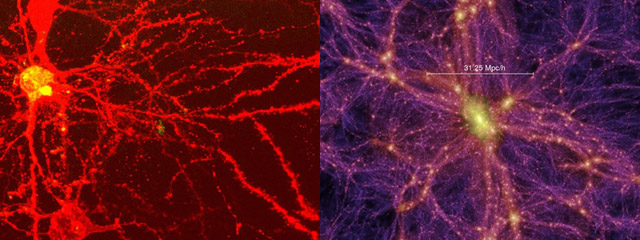
A common juxtaposition, shown during many of my lectures, between a neuronal network (left) and the vast cosmic structure (right).
As it turns out, this inquiry might not be as far-fetched as we might think. A few days ago, National Geographic posted an intriguing article titled Astronomers Get First Glimpse of Cosmic Web, where they report how scientists have for the first time captured a peek of the “vast, web-like network of diffuse gas that links all of the galaxies in the cosmos.” As stated in the article:
Leading cosmological theories suggest that galaxies are cocooned within gigantic, wispy filaments of gas. This “cosmic web” of gas-filled nebulas stretches between large, spacious voids that are tens of millions of light years wide. Like spiders, galaxies mostly appear to lie within the intersections of the long-sought webs.
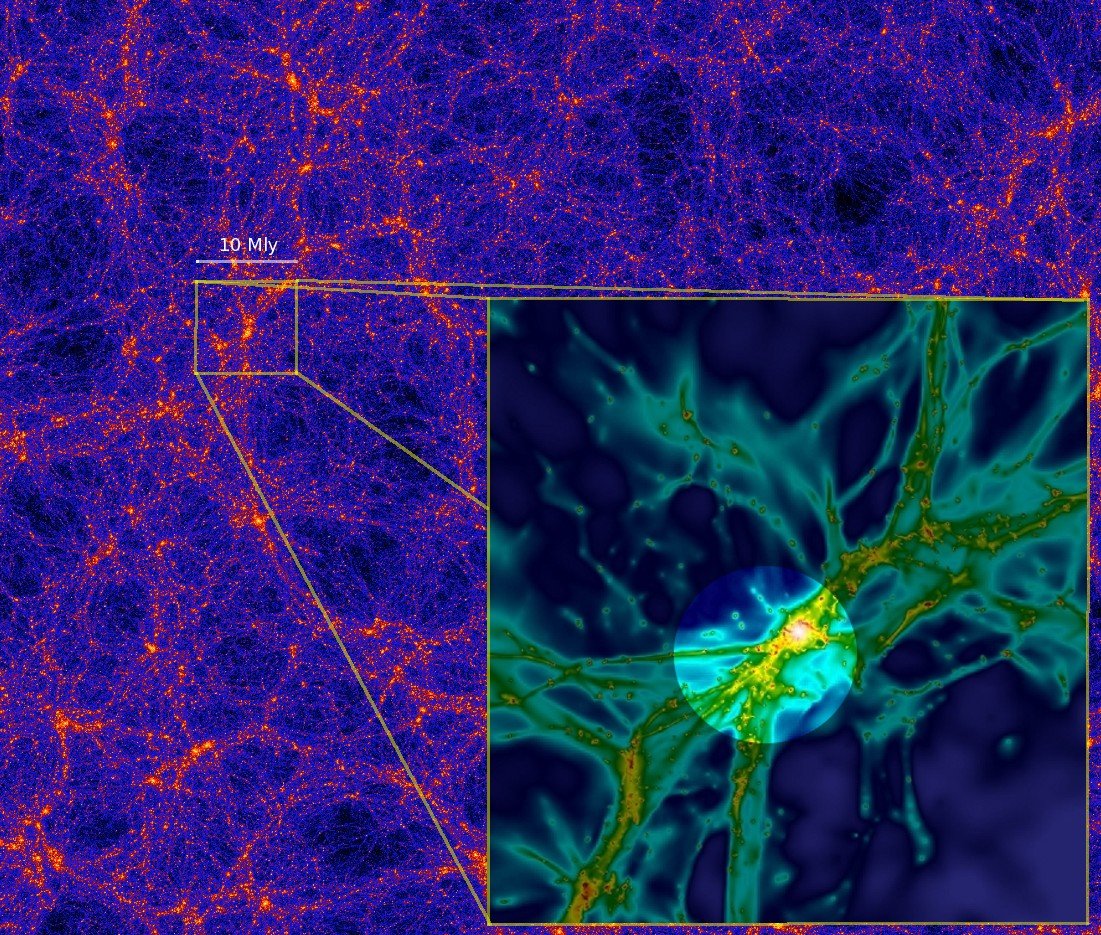
From the original image caption in the article: Computer simulations suggest that matter in the universe is distributed in a “cosmic web” of filaments, as seen in the image above from a large-scale dark-matter simulation. The inset is a zoomed-in, high-resolution image of a smaller part of the cosmic web, 10 million light-years across, from a simulation that includes gas as well as dark matter. The intense radiation from a quasar can, like a flashlight, illuminate part of the surrounding cosmic web (highlighted in the image) and make a filament of gas glow, as was observed in the case of quasar UM287. Credit: Anatoly Klypin and Joel Primack, S. Cantalupo
This find is not just impressive and thought-provoking, but it could also become a major focus of the emerging fields of complex systems and network science.
Saturday, November 23. 2013
fabric | ch, Satellite Daylight, 46°28'N @ Haus für elektronische Künste | #architecture #interaction
-----
For our own documentation, published a year ago in the context of the exhibition Sensing Place at the Haus für elektronische Künste in Basel, the video is a short presentation of Satellite Daylight, 46°28'N.
Thursday, November 07. 2013
Seven Minutes | #scripting #architecture
-----
By Beatrice Galilee
Seven Minutes
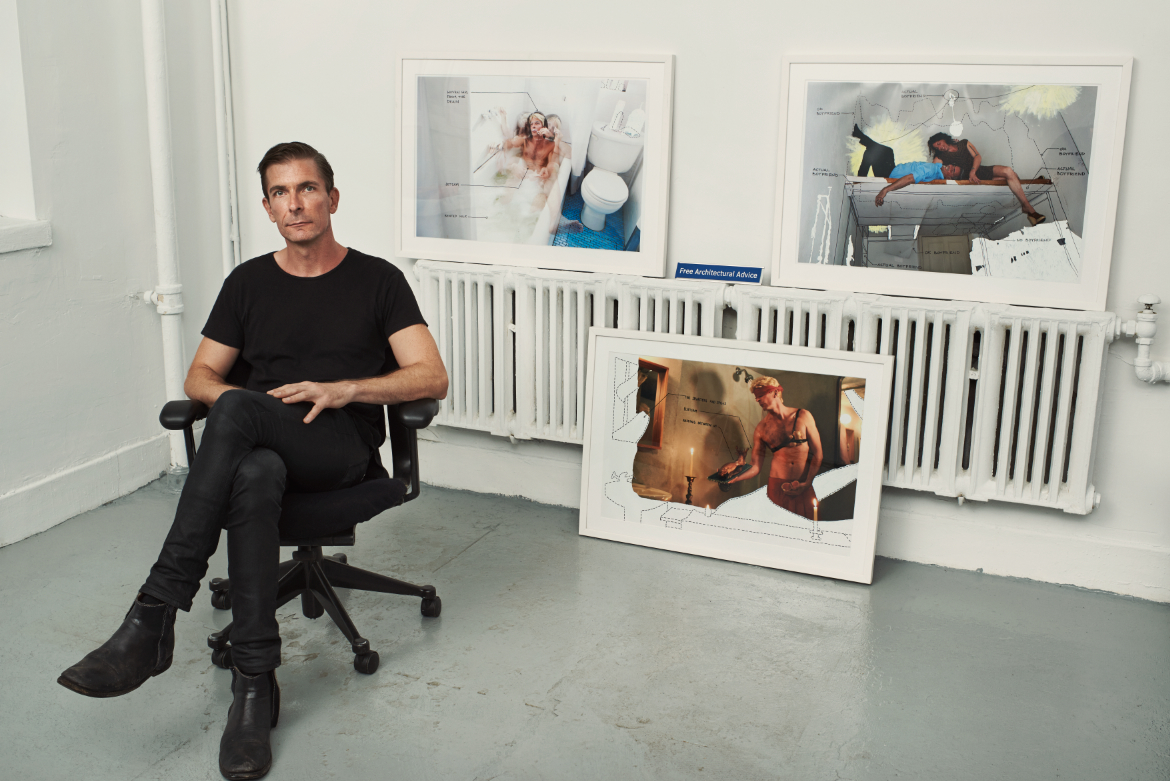
In 2007, The New York Times published an article entitled ‘For The Brain Remembering Is Like Reli
This project is generously supported by The Graham Foundation
Related Links:
Wednesday, September 04. 2013
NASA certifies first 3D printer for use in space
Via Dezeen
-----
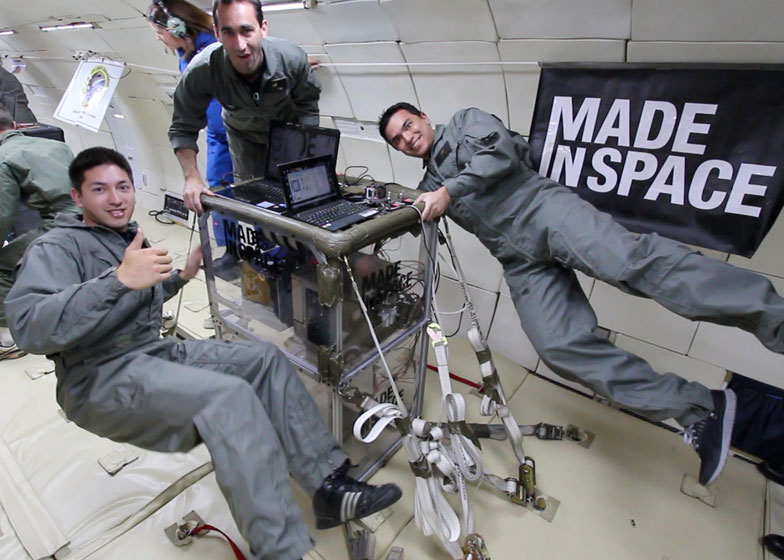
A 3D printer approved by NASA will be flown to the International Space Station next year so astronauts can print components, tools and equipment on-demand in space.
More about it HERE.
and HERE.
Monday, June 03. 2013
# LIBERTY SQUARE /// Occupy Gezi: The Reason why Politicians are so Afraid of the Bodies
Note: interesting post by Léopold Lambert about body, presence and activism, as a tribute to all "occupy" movements of parks, streets, squares, etc. and in particular the recent ones in Turkey: body presence in public physical spheres completed by social media communication.
Via The Funambulist
-----
de Léopold Lambert
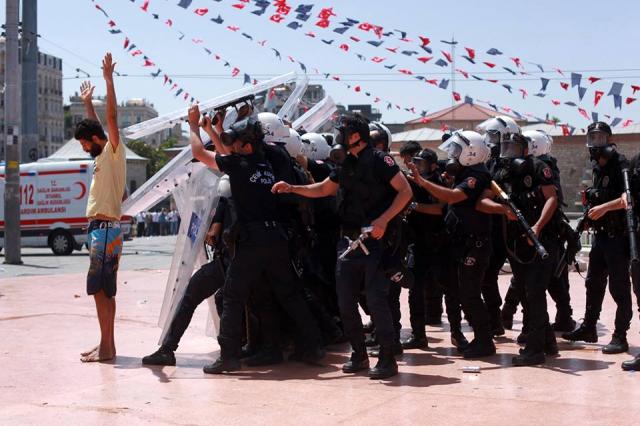
A Body of Gezi Park. 31 May 2013. From Yücel Tunca via Nar Photos.
For the last five days, the small park of Gezi near Taksim square in Istanbul has been occupied by dozens of thousands of people protesting, at first, against the urban project in development for this site that involves a shopping mall. Such a project that transforms a public space into an instrument of capitalism is part of a long series of others that has been changing Istanbul’s urban landscape and politics in the last decade. Very quickly however, the protest generalized itself and reached other cities of Turkey (Ankara, Izmir and more) in an attempt to globally constitute a strong resistance against the conservative and religious Turkish government and its Prime Minister, Recep Tayyip Erdoğan. The latter used to be Istanbul’s mayor and still has strong interests in its development. The police violently attacked the protesters, injuring severely some of them, but reinforcing the movement’s determination and legitimacy.
It is interesting to observe that such a news has been spread out much rapidly on the international level than on the national one since the Turkish Press – just like the American one, including the New York Times, at the beginning of the Occupy movement – did not communicate about this information in a clear submission to the political status quo. In New York, hundreds of occupiers went back on Zucchotti Park to show their international solidarity with the Turkish movement of the same name.
For the last two years, many “professional politicians” in power learned what it is to be afraid of the multitude. All answered with brutality (from Cairo to Santiago, via Benghazi, Damascus, Athens, Montreal, New York and many more), some stepped down, some kept their status, some others are still ordering massacres against their own people but all of them seems to have feared the power of the crowds, gathered by their common will to resist against totalitarianism and capitalism. Something needs to be understood here: despite all the media attempts to “surf” on these political waves with a common approach of the use of social media as a new form of political act – to a certain extent, it is not completely wrong – the thing that veritably choked the status quo is the gathering of bodies in the public space. Of course, some gathering of bodies are less political than others – sport events related ones for example – and therefore, there needs to be a certain performativity involved in this process; however, there is something inherently political in this act of forming a group of bodies in the public realms. As I have been writing often, especially to exclaim the sense of this notion of occupying, our body can only be at one place at a time and, because of its materiality, no other body can be at the very same place at the same time. This involves a certain necessity as our body is always spatialized but, at the very same time, it also involves the radical choice for this space at the exclusion of every other in the world. At each moment of our life, we have therefore to re-accomplish the necessary yet radical choice of the localization of our body. When thousands of bodies choose to be localized together in the streets or on a square, in such a way that they are not participating to the economy and might even have to confront the physical violent encounter with the various forces of suppression, rather than choosing the comfort of the private realms, a strong political gesture is being created.
It would be too easy to necessarily applaud any political gesture of this kind. The recent numerous demonstrations of catholic extremists and other movement of right wing activists in France against the legislation authorizing gay marriage – now in vigor - prove it well. In this latter case, the bodies that were demonstrating were the bodies representing the norm: white Christians heterosexuals. The latter do not really suffer from the way society is organized as they constitute the bodies that society considers to organize itself. The streets of Istanbul, on the other hand, are filled by people whose bodies are getting more and more constrained by the conservative religious dominant ideology – by dominant, I don’t imply as much a question of majority than one of relationships of power.
As always, architecture is not innocent here. The fact is that these bodies are gathering in the public realms, but more precisely, outside, in the streets, on the squares, in the parks. Architecture through its internality always has a limitation of the amount of bodies it can host (the maximum occupancy as the urban code defines it); the outdoor world does not really. Choosing for our body to be outside is to potentially contribute to a crowd that theoretically won’t be limited in its number by physical borders, hence the fear of politicians to see the movement spreading. Architecture is inherently participating to the striation of space, nevertheless, it can attempt to create a substantial porosity between the space it contains and the public one that surrounds it, in such a way that the political bodies can appropriate it.
For an excellent reflective digest about Occupy Gezi and these last five days in Istanbul, read this article on Jadaliyya.
Friday, March 08. 2013
Roam through colour with the Interactive installation by Carlos Cruz Diez
Via It's Nice That
-----
Posted by Ross Bryant

Carlos Crus-Diez: Chromosaturation
We all love a bit of colour in our lives, right? It’s the spice that can turn the drabbest of life experience into a wealth of vivid wonder, taking the ordinary and making it extraordinary. Carlos Cruz-Diez has been exploring the kinetic movement of colour in his celebrated works, creating interactive manufactured chambers that lures visitors to rethink their perceptions of colour in their everyday lives.
The installation works in a very personal way, altering the colour of your skin, clothing and anything you so happen to be carrying on your person. It culminates to create an experience that adapts depending on what chamber you emerse yourself within, drawing attention to the individual experience of processing colour through a disruption in the way that light is received and understood.
These wonderful installations have been developed over many years, and can be explored at the Musée en Herbe en in paris and the Museo universitario arte in Mexico. But if you can’t make it to these, feast on some images and live your life through a spectrum of colours that can only add a richness to your imagination and a smile to your face.








Carlos Crus-Diez: Chromosaturation
Related Links:
Thursday, June 21. 2012
The One-Way Ticket – Voyage into deep space with no return – DI RCA 2012
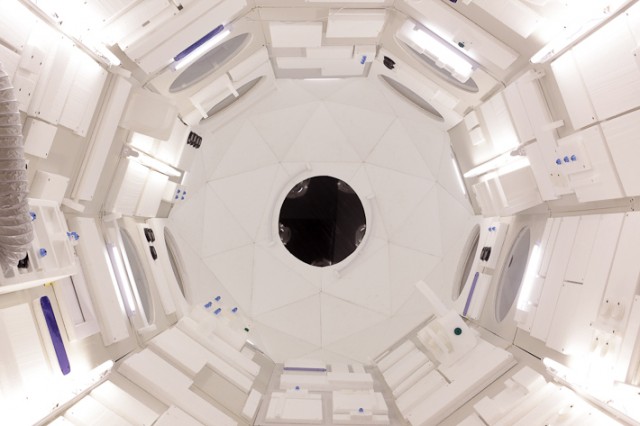
First in the series of projects to be featured on CAN from the current Royal College of Art exhibition is “The One-Way Ticket” by Joseph Popper. The project examines notions and consequences of sending one person on a voyage into deep space from where they will not return. The idea of not coming back opens up an exceptional scenario, so far unprecedented in the history of human space travel.
Continue reading.... The One-Way Ticket – Voyage into deep space with no return – DI RCA 2012
Related Links:
Personal comment:
A very lonely, slow and silent trip.
fabric | rblg
This blog is the survey website of fabric | ch - studio for architecture, interaction and research.
We curate and reblog articles, researches, writings, exhibitions and projects that we notice and find interesting during our everyday practice and readings.
Most articles concern the intertwined fields of architecture, territory, art, interaction design, thinking and science. From time to time, we also publish documentation about our own work and research, immersed among these related resources and inspirations.
This website is used by fabric | ch as archive, references and resources. It is shared with all those interested in the same topics as we are, in the hope that they will also find valuable references and content in it.
Quicksearch
Categories
Calendar
|
|
July '25 | |||||
| Mon | Tue | Wed | Thu | Fri | Sat | Sun |
| 1 | 2 | 3 | 4 | 5 | 6 | |
| 7 | 8 | 9 | 10 | 11 | 12 | 13 |
| 14 | 15 | 16 | 17 | 18 | 19 | 20 |
| 21 | 22 | 23 | 24 | 25 | 26 | 27 |
| 28 | 29 | 30 | 31 | |||



